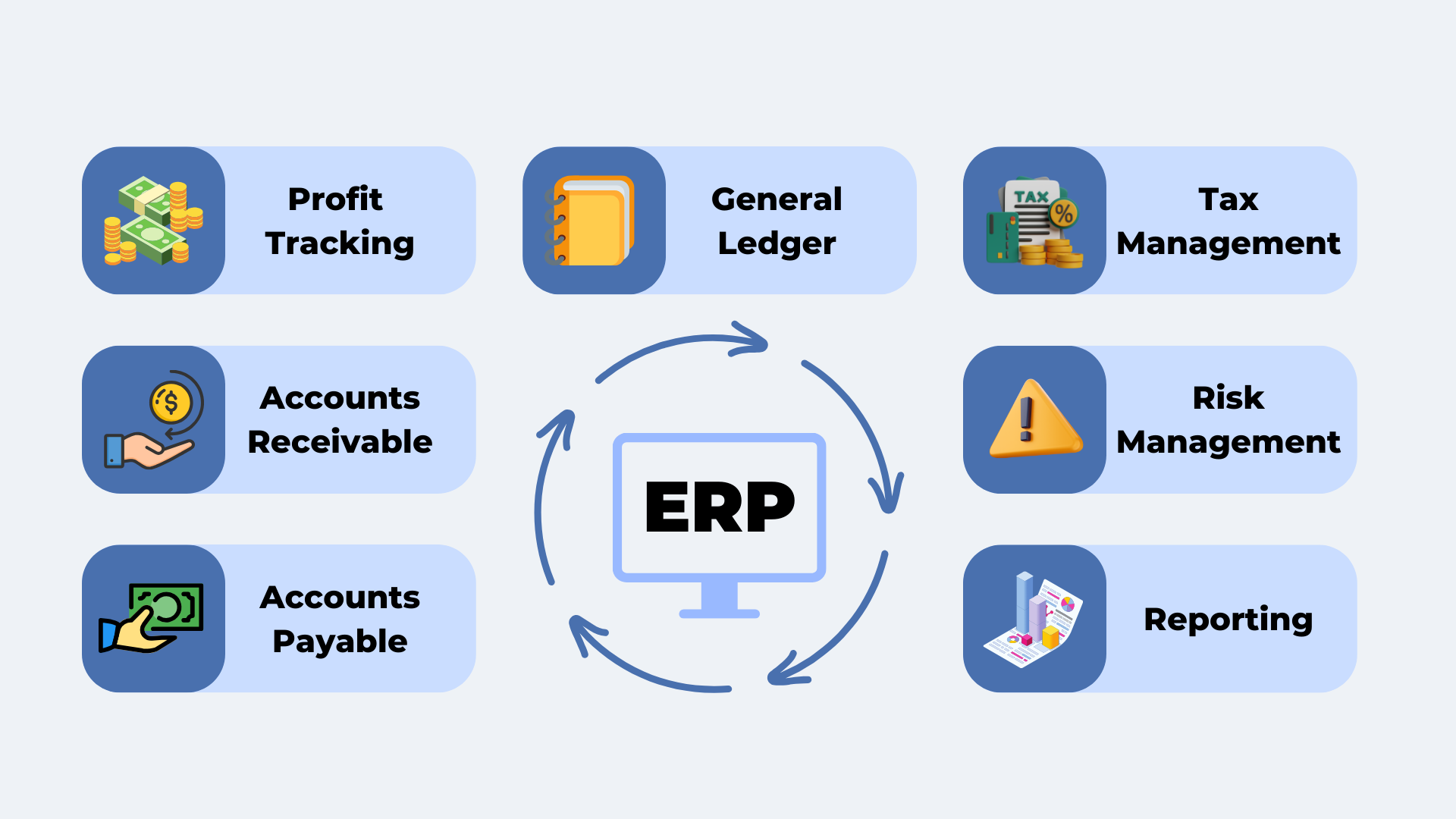The Hidden Depths: My Journey Through ERP Financial Risk Management – A Guide for Beginners
I remember vividly, back in my earlier days, sitting in a boardroom. The atmosphere was buzzing. We were about to launch a new, shiny ERP system for a client, a mid-sized manufacturing company. Everyone was focused on the "go-live" date, the new features, the training. I was too, to be honest. But then, a quiet voice from the finance department raised a hand, "What about the risks to our financial reporting? To our cash flow? If something goes wrong here, we’re not just inefficient; we’re bankrupt."
That was my "aha!" moment. It hit me like a splash of cold water. We weren’t just installing software; we were fundamentally changing the nervous system of the company’s finances. And with great change, comes great risk. This isn’t just for the big corporations; any company embarking on an ERP journey needs to understand this.
What Exactly is ERP Financial Risk Management? A Simple Explanation
Think of your company’s finances as a delicate ecosystem. Every transaction, every report, every payment is interconnected. An ERP system is designed to be the central brain for this ecosystem, managing everything from sales orders and inventory to payroll and general ledger entries.
ERP Financial Risk Management, simply put, is the process of identifying, assessing, and mitigating potential threats within your ERP system that could negatively impact your company’s financial health. It’s about building safeguards, like strong levees, to protect your financial data and processes from unexpected floods.
It’s not just about the big, dramatic failures. Sometimes, it’s a slow leak that drains resources over time. I’ve seen it all, from minor data discrepancies that snowball into massive reconciliation nightmares, to full-blown compliance breaches that result in hefty fines.
Why Does This Matter So Much? The Stakes Are Higher Than You Think
Imagine you’re building a house. You wouldn’t just slap bricks together without a solid foundation or a proper plumbing plan, right? Your ERP system is the foundation and the plumbing for your financial operations. If either is flawed, the whole house is at risk.
Here’s why ignoring ERP financial risk is like playing with fire:
- Direct Financial Losses: This is the obvious one. Errors in invoicing can mean you don’t get paid, or you overpay suppliers. Inaccurate inventory valuation can lead to poor purchasing decisions and wasted capital. Fraud, enabled by weak controls, can directly siphon money from your accounts. I once saw a company lose millions over several months because a lack of proper user access controls allowed a rogue employee to approve fictitious invoices. A tough lesson for them, and for me.
- Regulatory Fines & Penalties: Many industries have strict financial regulations (think SOX, GDPR, industry-specific compliance). If your ERP system isn’t configured to meet these, or if data integrity is compromised, you could face massive fines, legal action, and reputational damage. It’s not just about doing things right; it’s about proving you’re doing things right.
- Damaged Reputation & Loss of Trust: If your financial reports are consistently inaccurate, or if a major financial error comes to light, investors, customers, and even employees lose faith. This can lead to a plummeting stock price (if public), difficulty securing loans, and a general loss of market standing. Rebuilding trust is a monumental task.
- Operational Disruptions: Imagine your financial reporting suddenly grinds to a halt because of a system error or data corruption. You can’t close the books, can’t pay employees, can’t make strategic decisions. The ripple effect can paralyze the entire business.
- Inefficient Decision Making: ERP systems are supposed to provide real-time, accurate data for better decision-making. If the data is compromised by risk, then your strategic choices will be based on faulty information, leading to poor investments, missed opportunities, or even catastrophic business choices.
My Practical Toolkit: How to Build Your Financial Levees
Over the years, I’ve developed a sort of mental checklist, a set of principles that I now apply to every ERP project. It’s about being proactive, not reactive. For beginners, these might seem like big steps, but breaking them down makes them manageable.
1. Before You Even Start: The Foundation
This is where most of the critical work happens. Don’t rush the planning phase!
- Due Diligence on Vendors & Systems: Not all ERPs are created equal. Some are stronger in finance, others in manufacturing. Does the vendor have a track record of security and compliance? Talk to their other clients. Ask direct questions about their financial controls. My rule of thumb: If they can’t clearly explain how their system helps mitigate financial risk, they haven’t thought it through enough.
- Clear Scope & Requirements: Define exactly what financial processes your ERP will manage and what regulatory requirements it needs to meet. Ambiguity here is a breeding ground for future problems. Every financial report, every approval workflow, every audit trail needs to be mapped out.
- Risk Assessment from Day One: Don’t wait until testing. Right from the start, gather a diverse team (finance, IT, operations, legal) and brainstorm every conceivable financial risk. What if data gets corrupted? What if someone gains unauthorized access? What if a regulatory change happens mid-project? Prioritize these risks and start planning mitigation strategies.
- Robust Project Management: A well-managed project is a less risky project. Ensure you have clear timelines, dedicated resources (especially from finance!), and regular check-ins. Financial experts should be integral to the project team, not just consulted occasionally.
2. During the Implementation: The Build
This is where you put your plans into action.

